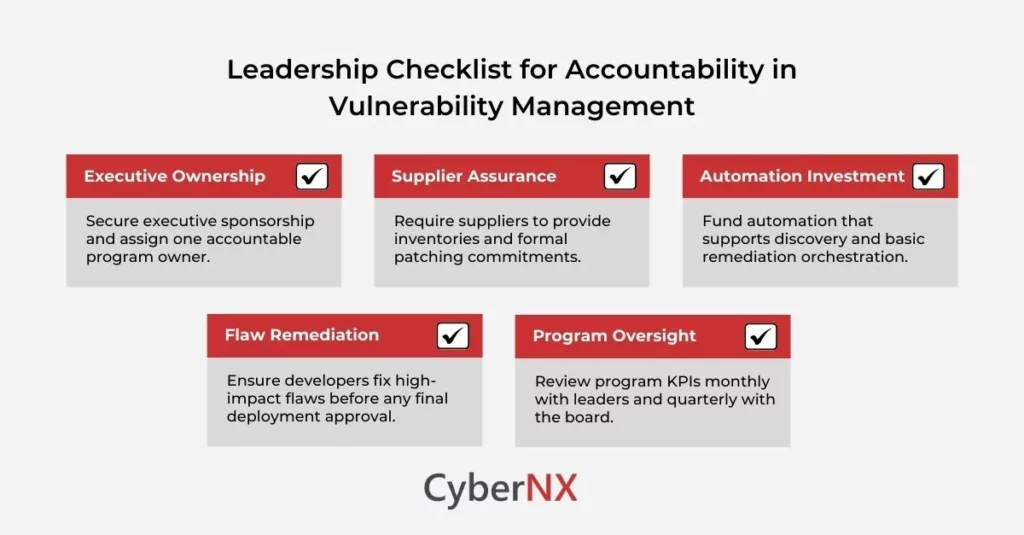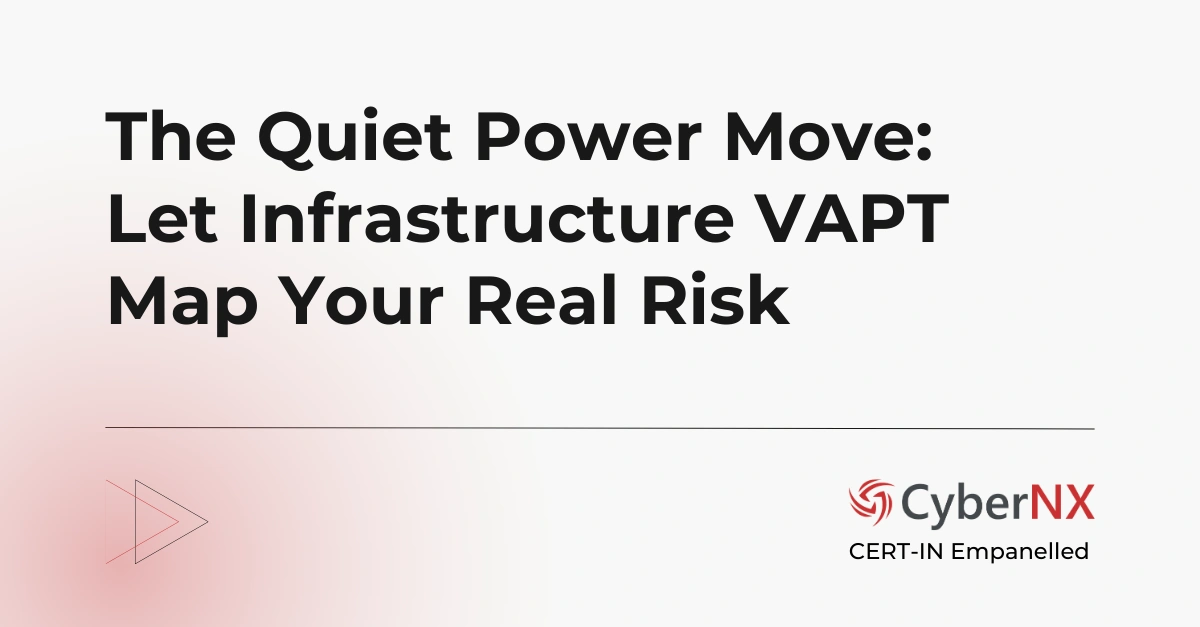In boardrooms and security operations centres (SOCs), leaders are now observing a stream of software flaws, misconfigurations and supply-chain gaps. These threaten uptime, trust and revenue. Treating each finding as a one-off doesn’t help. What leaders need is a system that converts continuous discovery into measurable reduction in business risk. Vulnerability management, here, emerges as the top solution.
Recent reports show a rising trend in publicly exploited vulnerabilities. In 2024 researchers identified roughly 768 CVEs that were publicly reported as exploited in the wild, a notable increase versus the prior year; similarly, catalogues tracking known exploited vulnerabilities listed well over a thousand entries by year-end. Those figures sharpen the imperative for executives to understand both what is vulnerability assessment and how their organization practices vulnerability management.
This guide explains what vulnerability management does, how it works and how it differs from tactical scans. It also answers a practical search many executives make: what is vulnerability assessment and how should its results be consumed by leadership?
What is Vulnerability Management?
At its simplest, vulnerability management is a program that discovers weaknesses, assesses their risk to the business, prioritizes actions and verifies fixes. It is a blend of tooling, processes and governance that turns noisy scan outputs into prioritized decisions. For executives, a mature program provides visibility across the estate, measurable reduction in critical exposure, and a predictable cadence for remediation.
A frequent companion question is what vulnerability assessment is; the two are related but not interchangeable. What is vulnerability assessment primarily describes a targeted activity – scans, configuration reviews, and automated checks – that produce a list of findings. The assessment is the input; vulnerability management is the program that turns that input into sustained change.
Another way to think about it: the assessment tells you which doors are unlocked; the program decides which doors to lock now, and which need architectural redesign later.
Vulnerability Management Process
A reliable vulnerability management process prevents reactive cycles. The core stages are:
1. Asset Discovery and Business Context
Inventory assets and map them to business services. This contextual map ensures subsequent steps target what matters most to customers and revenue.
2. Vulnerability Discovery
Here the question what is vulnerability assessment appears often in board meetings; what a vulnerability assessment is, in operational terms, means running scans, configuration checks and targeted tests to identify known flaws. Results must be normalized into a common format for prioritization. The assessment also includes validation to reduce false positives before large remediation campaigns begin.
3. Risk-based Prioritization
Combine contextual importance, exploitability intelligence and technical severity to rank findings. This prioritization makes the program operationally feasible for teams stretched thin.
4. Remediation and Mitigation
Assign ownership, apply fixes or mitigations, and track progress through to verification.
5. Verification and Continuous Monitoring
After fixes, confirm closure via rescans and monitoring. Feed lessons back into development and procurement to stop repeat findings.
6. Metrics and Governance
Executive dashboards should show time-to-detect, time-to-remediate, percentage of high-risk exposure, and residual risk. These translate technical activity into business outcomes and inform quarterly investments.
Best Practices for Vulnerability Management
Turning vulnerability data into meaningful action requires more than tools; it demands disciplined practices that align security work with business priorities.
| BEST PRACTICE | DESCRIPTION |
| Continuous Vulnerability Scanning | Scans IT assets to identify vulnerabilities before attackers exploit. |
| Risk-Based Prioritization | Vulnerability remediation with the highest risk to critical systems. |
| Patch and Remediation Management | Apply patches & verify successful deployment across the environment. |
| Asset Inventory & Classification | Updating inventory to understand exposure & prioritize protection. |
| Threat Intelligence Integration | Using external intelligence to anticipate emerging vulnerabilities. |
| Regular Reporting & Metrics | Dashboards & reports to track progress, demonstrate security posture. |
| Automation & Orchestration | Automate scanning, patching and workflows to improve efficiency. |
Vulnerability Management vs Vulnerability Assessment
The distinction matters. Leaders commonly ask: what is vulnerability assessment and how does it feed longer-term efforts? In short, the assessment refers to the tactical scans and tests that identify flaws; by contrast, the program is the system that prioritizes, tracks, and verifies corrective actions. Because the assessment focuses on discovery, asking what is vulnerability assessment helps teams define scope and cadence for testing.
Assessment without a program produces reports that age; program without frequent diagnostic inputs loses fidelity. Together they form the detection, decision, remediation and validation loop that reduces exposure over time.
Read our blog Vulnerability Assessment Guide to better understand how it differs from vulnerability management.
Practical Elements That Make Vulnerability Management System Work
From accurate scans to seamless ticketing, the difference between theory and reality lies in the operational details that keep the system moving.
1. Types of Assessment Activities and When to Use Them
Organizations typically run several kinds of diagnostic exercises. Authenticated scans provide an inside view of a host or application and generally report fewer false positives. Unauthenticated scans and external surface mapping reveal exposure visible to an attacker. Configuration audits, dependency analyses for third-party libraries, and container-image reviews round out a comprehensive detection capability. Each technique has trade-offs in coverage and accuracy that deserve explicit acceptance criteria.
2. Credentialed Versus Non-Credentialed Scanning
Credentialed checks use valid access to enumerate configuration and patch levels, allowing for deeper findings. Non-credentialed checks show what an external attacker can discover, which is critical for perimeter risk assessments. Both have a role in a mature security lifecycle.
3. Orchestration, Ticketing and Remediation Workflows
The weakest link is often in the hand-off. Automated ticket creation, clear ownership, SLA-driven priorities and integrations with change-management systems reduce friction. Use orchestration to group related fixes and to avoid repeatedly opening and closing tickets for the same root cause. When patch windows are limited, temporary mitigations and compensating controls should be tracked and timeboxed.
4. Choosing Tools and Integrations
Tools vary: vulnerability scanners, software composition analysis, cloud posture management, and endpoint detection platforms all contribute signals. Tool selection should prioritize fidelity, integration APIs, and a vendor track record for timely plugin updates. Consolidate feeds into a single rationalized view so analysts see one prioritized queue rather than dozens of overlapping lists.
5. KPIs That Matter to the Board
Translate operational measures to business impact. Useful indicators include reduction in high-risk exposure over time, average time from discovery to mitigation for critical assets, and the proportion of externally facing services with validated remediation plans. Present metrics as trends and outcomes, not raw counts, so non-technical leaders can evaluate program effectiveness.
Vulnerability Management Challenges & Quick Wins
Teams often drown in quantity: an unfiltered flood of low-value findings erodes focus. Quick wins include disabling noisy, irrelevant checks, applying credentialed scanning for better signal, and instituting a rapid patch window for external systems. Establish an exceptions policy so that justified deferrals are documented and re-reviewed.
A Short Leadership Checklist
A focused set of leadership actions can help in keeping vulnerability management accountable.
Embedding Governance, People and Economics
A sustainable program isn’t just about technology – it thrives when governance, staffing, and financial alignment work in unison.
1. Embedding the Process into Engineering and Procurement
Get ahead of recurring findings by changing how teams build and buy technology. Contractually require security baselines and timely patching from suppliers. Make security checks part of procurement acceptance and proofs-of-concept. Adding automated scanning into acceptance tests reduces the volume of emergency patches.
2. Staffing and Skill Mix
Roles should be clear: analysts manage automated feeds and triage; application owners own remediation; platform teams handle infrastructure fixes. A central engineering team can own orchestration and reporting tooling while embedded security champions in product teams speed fixes. Outsource where capacity is limited but retain architectural ownership in-house.
3. Program Maturity and Road-mapping
Start with discovery and basic remediation SLAs, then layer in advanced prioritization, automation, and developer integration. Mature organizations maintain a living risk model, integrate exploit intelligence and run exercises to validate that prioritization reflects attacker behaviour. Build a roadmap with short wins (reduce high exposure by X% in 90 days) and longer goals (reduce mean time to remediate by Y%).
4. The Economics of Remediation
Frame remediation investment as risk reduction: fewer outages, lower breach likelihood and avoided regulatory fines. Use scenario planning to quantify the financial benefit of eliminating an exposure that could affect revenue-critical systems. These calculations help secure ongoing budget for tooling and staff.
Vulnerability Management Vendor Selection: Questions to Ask
The right vendor isn’t about the longest feature list but about whether their capabilities fit your operational model and risk priorities.
- Do you incorporate exploit intelligence in prioritization?
- How quickly are detection signatures or plugins updated after disclosure?
- What integrations exist with ticketing, CMDB and CI/CD systems?
- Can you provide APIs and raw data so automation is possible?
- Do you support authenticated scans and software composition analysis for third-party components?
Choosing a vendor is less about feature parity and more about fit with your operational model and support for automation.
Board-Ready Narrative
When briefing the board, focus on trends, momentum and residual risk. Show how exposure has changed over time, what prioritized fixes were taken, and what business processes are now more resilient. Present clear asks – budget, staffing or policy changes – with quantified outcomes so non-technical leaders can act.
Conclusion
Vulnerabilities will never disappear. The business imperative is to run a program that makes discovery meaningful, measurable and accountable. Leaders should understand the tactical inputs and insist on governance-backed processes to translate those inputs into risk reduction.
The best outcomes come from marrying automation with judgment, tying technical work to business impact, and proving progress to stakeholders in clear, financial terms. Organizations that treat remediation as strategic rather than tactical will see faster, more sustainable improvements in resilience. Contact us today for vulnerability management services.
Vulnerability Management FAQs
How quickly should we expect meaningful results?
With focused prioritization and a small set of high-impact fixes, many organizations see measurable exposure reduction within three to six months. Speed depends on governance, change windows and the complexity of affected systems.
Can I rely solely on open-source scanning tools?
Open-source tooling is valuable and cost-effective, but most teams pair it with commercial feeds for timely vulnerability signatures, exploit intelligence, and enterprise integrations that reduce manual triage work.
How should we respond to a credible, active exploit affecting our stack?
Treat it as an incident: validate exposure, enact emergency mitigations, and follow incident-response playbooks that prioritize containment, customer communication, and legal/regulatory obligations.
What role does continuous monitoring play in long-term resilience?
Continuous monitoring reduces detection windows and supports fast validation after remediation. It also helps identify configuration drift and emergent exposures that episodic scans miss.






